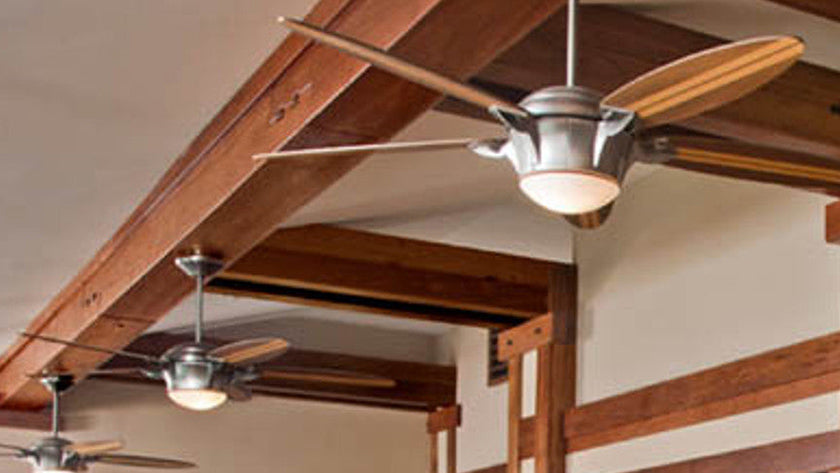
Ceiling Fan Tips
Search
Looking to buy a new ceiling fan? The fortunate thing is, there’s a lot of good ones out there to choose from. Lots of ceiling fan companies rely on unique styles, catchy designs and added features to market their ceiling fans. With all the different models to choose from, here are a couple of tips to help you make the right decision.
First of all, consider the materials used to make the ceiling fan. If you live near the sea, you’re going to need fans with rust-free finishes, as well as blades that don’t tend to warp. Homes located along coastal areas are constantly exposed to salty air which eventually corrodes regular metal.
Another thing to think about is seasonality. Ceiling fans ought to be flexible enough to enable ventilation adjustment. For instance, the “downdraft” mode is when blades run counter clockwise, as this circulates cool air better. During cold weather, however, ceiling fans should be able to reverse the motors to circle clockwise, which keeps warm air from rising. Not many people are aware of this handy function, and you can find reverse switches along the top of the fan.
Regarding size, bigger is always better when it comes to ceiling fans. A regular sized ceiling fan usually spans 36 to 60 inches, from the tip of one blade to the opposite blade’s tip. Trends show that customers usually go for the 42- to 52- inch fans, which work well for rooms that measure an average of 12 x 12. A larger room of 20 x 20 is well-ventilated by ceiling fans measuring 52 inches. If you wish to buy a ceiling fan for a particularly large room, consider getting two ceiling fans instead. Space them evenly in the room to achieve equal ventilation.
Ceiling height is important, especially if you live in a slightly smaller apartment or dormitory. The standard distance from the floor to the ceiling is nine feet. If you have a ceiling that’s lower to the floor than nine feet, simply flush mount the fan to the ceiling. Check that you don’t bump into the fan, or that the motor blades don’t knock over any feature. On the other hand, for ceilings that are higher than average, a down rod for your ceiling fan is the practical solution; instead of being attached directly to the ceiling, the down rod holds the ceiling fan at a lower height. Otherwise, subsequent ventilation has no significant impact on the room. If you find out that your ceiling is slightly sloped, you can also use a downward rod that’s angled, to help keep the fan facing straight downward.
A word or two on decoration: if you want your ceiling fan to help improve your home design, opt for a unit that has three blades or fewer. If this doesn’t cut it for you, then fans with more than six blades are generally considered more attractive than fans with less. Many fans are somewhere in the middle, sporting four to five blades. Also, turn a fan on before buying, and observe if there is any wobbling, indicating imbalance among the blades.
Ceiling fans today usually have added features that help you maximize its function. Browse through ceiling fans that allow you to install light fixtures—it’s a great plus for better lighting and design.


Comments